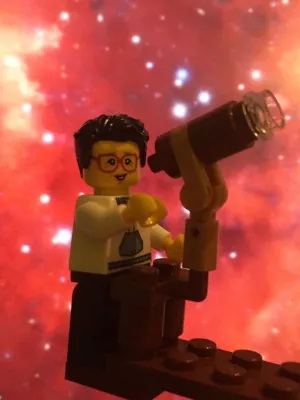
Henrik Hartman
Researcher (Leave of Absence)

The planet search programme at the ESO CES and HARPS IV. The search for Jupiter analogues around solar-like stars
Author
Summary, in English
Context. In 1992 we began a precision radial velocity survey for planets around solar-like stars with the Coude Echelle Spectrograph and the Long Camera (CES LC) at the 1.4m telescope in La Silla (Chile) resulting in the discovery of the planet iota Hor b. We have continued the survey with the upgraded CES Very Long Camera (VLC) and the HARPS spectrographs, both at the 3.6m telescope, until 2007. Aims. In this paper we present additional radial velocities for 31 stars of the original sample with higher precision. The observations cover a time span of up to 15 years and permit a search for Jupiter analogues. Methods. The survey was carried out with three different instruments/instrument configurations using the iodine absorption cell and the ThAr methods for wavelength calibration. We combine the data sets and perform a joint analysis for variability, trends, and periodicities. We compute Keplerian orbits for companions and detection limits in case of non-detections. Moreover, the HARPS radial velocities are analysed for correlations with activity indicators (CaII H&K and cross-correlation function shape). Results. We achieve a long-term RV precision of 15 m/s (CES+LC, 1992-1998), 9 m/s (CES+VLC, 1999-2006), and 2.8 m/s (HARPS, 2003-2009, including archive data), respectively. This enables us to confirm the known planetary signals in iota Hor and HR 506 as well as the three known planets around HR 3259. A steady RV trend for epsilon Ind A can be explained by a planetary companion and calls for direct imaging campaigns. On the other hand, we find previously reported trends to be smaller for beta Hyi and not present for alpha Men. The candidate planet epsilon Eri b was not detected despite our better precision. Also the planet announced for HR 4523 cannot be confirmed. Long-term trends in several of our stars are compatible with known stellar companions. We provide a spectroscopic orbital solution for the binary HR 2400 and refined solutions for the planets around HR 506 and iota Hor. For some other stars the variations could be attributed to stellar activity, as e.g. the magnetic cycle in the case of HR 8323. Conclusions. The occurrence of two Jupiter-mass planets in our sample is in line with the estimate of 10% for the frequency of giant planets with periods smaller than 10 yr around solar-like stars. We have not detected a Jupiter analogue, while the detections limits for circular orbits indicate at 5 AU a sensitivity for minimum mass of at least 1M(Jup) (2M(Jup)) for 13% (61%) of the stars.
Department/s
- Lund Observatory - Has been reorganised
Publishing year
2013
Language
English
Publication/Series
Astronomy & Astrophysics
Volume
552
Document type
Journal article
Publisher
EDP Sciences
Topic
- Astronomy, Astrophysics and Cosmology
Keywords
- stars: general
- planetary systems
- techniques: radial velocities
- methods: data analysis
Status
Published
ISBN/ISSN/Other
- ISSN: 0004-6361

